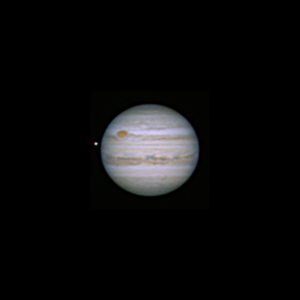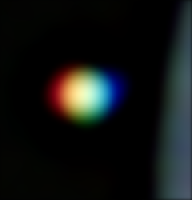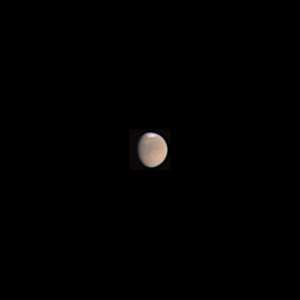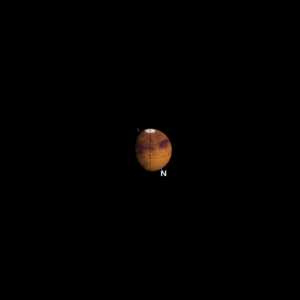Clouds cleared fairly early the evening of the 14th. I took several series of Jupiter images , skipped Saturn and then waited for Mars to clear the tree line.
Jupiter had the GRS and its inner moon Io visible right off the bat. However, both were headed for obscurity. Io was on the far side of Jupiter and only 8 minutes from eclipse. The GRS hung around for another hour and twenty minutes before Jupiter’s rotation sent it to the far side.
Due to Jupiter’s fast rotation (9h 55m) each exposure must be fairly short to avoid smearing the cloud details. At my focal length I take a 40 second stream of data through each of the three color filters. There is a 5 second gap in between each to ensure the next filter has settled into place. Although there is no perceptible movement in the cloud tops, you can see how much Io has moved in 45 seconds since each of the color images is offset from the others. You can just see Io’s bright yellow color where the separate red, green and blue exposures overlap to produce the final color.
This Mars image is the result of some experimentation. My previous Mars pictures ended up with the southern ice cap very overexposed even though I adjusted the individual exposures short enough to prevent saturating the detector chip. The contrast between the ice cap and the rest of the planet was just too much to process out. So, this time I reduced the exposure duration quite a bit. This appears to have worked except for one small hot spot in the ice cap. The reduction also lets you see the ice cap is not symmetrical.
For an explanation of caption information see exposure data.



